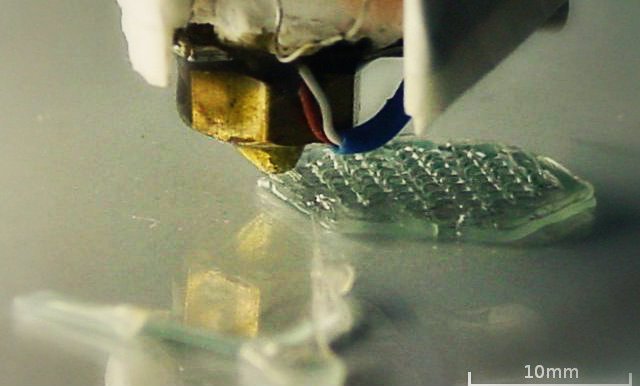The RepRap Printer, also called the Replicating Rapid Prototyper, was created as a starting point for the British to develop a 3D printer. This 3D printer would be able to make a copy of its own items, at a low cost. With the RepRap able to make copies of its own items, the makers envisioned the possibility of the RepRap units being cheap, allowing the manufacture of more complex products without having to use complex industrial infrastructure to make them. An initial study done on the RepRap supported the claim that by using RepRap to print common products, there were major economic savings. These saving were also more cost efficient since the RepRap printers was able to clone themselves. Making the savings even greater.

By Vik Ollivier [CC BY-SA 3.0 or GFDL], via Wikimedia Commons
A Great Potential to Educational Applications
Electronics printing was a major goal of the RepRap, focusing on electronics such as the circuit board. The technology of RepRap had such great potential to educational applications that the system had been used for educational mobile robotics platforms. The evidence that the RepRap was beneficial to education came from the affordable cost for rapid prototyping in the classroom, and also from the creation of inexpensive scientific equipment from the hardware designs that produced high quality products.
The RepRap also had other 3D printers that self-replicated. The RepRap Snappy, RepRap Dollo, and the RepRap Generation 7 Electronics. Although they may not have been the original RepRap, they were still more advanced than other self-replicating printers. With the goal of RepRap to produce self-replicating devices, not for its own purposes but to help individuals anywhere in the world, the RepRap 3D printing system enabled any individual to manufacture many different items and everyday life artifacts.
RepRap had revolutionized 3D printing
The RepRap had singlehandedly changed the 3D printing game by allowing anything to be printed over and over again using one machine. With the easy to use, do-it-yourself capabilities, as well as the low cost of obtaining the RepRap, the printer in retrospect gave printer power to the powerless. Bowyer had suggested that the RepRap were like viruses in that they had the ability to grow exponentially. If the RepRap could produce one prototype of one thing, then copy itself per day, the number of copies at the end of a month would be substantial. What other 3D printer had those capabilities? The RepRap had revolutionized 3D printing.